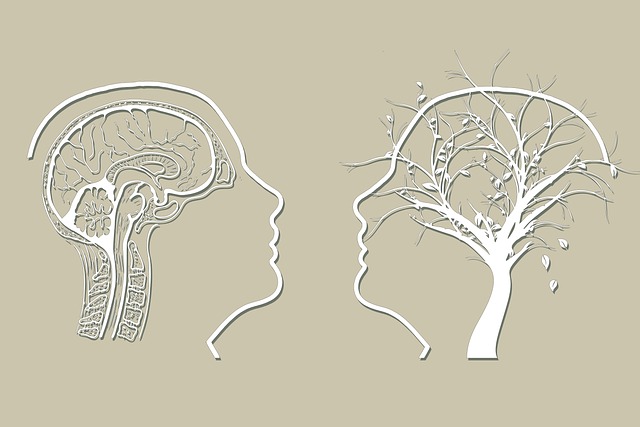Mental health professionals play a crucial role in supporting young children with codependency by conducting thorough risk assessments that go beyond checklists, evaluating personal and interpersonal factors. They address past traumas, current stressors, and relationships to identify red flags. Comprehensive risk assessment enables the creation of safe spaces for effective therapy, where mindfulness, conflict resolution, and stress management techniques foster resilience and holistic healing. Specialized training, education programs, and workshops empower therapists and children to cope with triggers, enhancing treatment outcomes. Public awareness about codependency is key for early identification and improved mental health journeys for young clients.
In the dynamic field of mental health practice, risk assessment is an indispensable tool for ensuring client safety. This comprehensive guide delves into the intricate process of evaluating risks specific to mental health professionals. From understanding the fundamentals of risk assessment in therapy to tackling unique challenges in treating young children and addressing codependency issues, we explore essential tools and techniques. Additionally, discover strategies to fortify safety measures and mitigate risks, focusing on best practices for comprehensive risk evaluation in modern mental health care, with a special emphasis on therapy for young children and codependency.
- Understanding Risk Assessment in Mental Health Practice
- The Unique Challenges of Therapy for Young Children
- Codependency: Recognizing and Addressing a Common Issue
- Essential Tools and Techniques for Comprehensive Risk Evaluation
- Strategies to Enhance Safety and Mitigate Risks in Treatment
Understanding Risk Assessment in Mental Health Practice

Mental health professionals are entrusted with caring for individuals facing a myriad of challenges, including codependency and its impact on young children. Understanding risk assessment is paramount in this context as it enables practitioners to identify potential hazards within their practice settings. This process involves a systematic evaluation of various factors that could pose risks to both clients and the therapists themselves. By adopting comprehensive risk assessment methods, mental health professionals can create safe and supportive environments, ensuring effective therapy for young children.
Risk assessment is not merely a checklist but an ongoing process tailored to each client’s unique needs. It incorporates the exploration of personal and interpersonal issues, including past traumatic experiences, current stressors, and interpersonal relationships. Professionals are trained to recognize red flags related to codependency and its manifestations in therapy sessions. Incorporating mindfulness meditation, conflict resolution techniques, and stress management workshops within an organization can further mitigate risks and promote a holistic healing process. These strategies empower both therapists and clients to navigate challenges, foster resilience, and create a nurturing atmosphere conducive to mental well-being.
The Unique Challenges of Therapy for Young Children

Therapy for young children presents unique challenges distinct from working with adults. Mental health professionals must consider the child’s developmental stage, cognitive abilities, and emotional resilience when tailoring therapeutic interventions. Youngsters often lack the vocabulary to express their feelings, making it crucial for therapists to employ creative techniques like play therapy or art-based approaches to foster communication and understanding.
Codependency issues, which can be deeply ingrained in young clients’ family dynamics, pose another complex challenge. Professionals need specialized training, such as those offered through Healthcare Provider Cultural Competency Training programs, to navigate these intricate relationships effectively. Mental Health Education Programs Design focused on childhood development and trauma-informed care are essential for building competent therapists who can offer age-appropriate support. Additionally, Stress Management Workshops Organization within therapeutic settings can empower both the healthcare provider and the child to cope with potential triggers and create a safe, supportive environment for healing.
Codependency: Recognizing and Addressing a Common Issue

Codependency is a significant issue that mental health professionals should be vigilant about recognizing and addressing, especially when working with young children. This complex emotional state often develops as a result of imbalanced interpersonal dynamics, where individuals become overly dependent on others for validation and support. In therapy settings, mental health experts may encounter clients who have formed codependent relationships, particularly those who have experienced trauma or lack healthy attachment figures in their lives.
Raising public awareness about codependency is crucial, as it can help both professionals and the general public understand its signs and effects. Through development of effective risk management planning, mental health professionals can create supportive environments that foster self-reliance. Stress reduction methods, such as mindfulness and cognitive behavioral therapy, are valuable tools to assist clients in breaking free from codependent patterns. By integrating these strategies into practice, mental health professionals contribute to the overall well-being of their young clients and enhance the success of treatment outcomes.
Essential Tools and Techniques for Comprehensive Risk Evaluation

In conducting comprehensive risk evaluations for mental health professionals working with therapy for young children and addressing codependency issues, a multi-faceted approach is crucial. Essential tools include structured clinical interviews, validated assessment scales, and detailed case history reviews. These methods help uncover underlying factors contributing to both the client’s mental illness and potential risks within their environment, fostering an accurate understanding of the child’s needs.
Beyond these techniques, promoting positive thinking and resilience building through targeted interventions can significantly impact outcomes. Mental illness stigma reduction efforts also play a vital role in creating a supportive therapeutic atmosphere. By integrating these strategies alongside traditional risk assessment methods, mental health professionals can enhance their ability to mitigate potential hazards while fostering a nurturing environment conducive to recovery and personal growth.
Strategies to Enhance Safety and Mitigate Risks in Treatment

Mental health professionals play a crucial role in helping individuals navigate their mental health journeys. To ensure effective and safe therapy, several strategies can be implemented to enhance safety and mitigate risks, especially when treating young children or those dealing with codependency.
One key strategy is integrating comprehensive risk assessment tools that consider both the client’s history and current circumstances. This includes screening for potential self-harm, suicide ideation, or any harmful behaviors, particularly during initial consultations. Additionally, tailoring therapy sessions to address specific issues like anxiety relief and mood management can significantly reduce risks associated with untreated mental health conditions. By fostering a safe, supportive environment and using evidence-based practices, professionals can effectively guide clients toward positive outcomes while minimizing potential hazards.
Mental health professionals play a vital role in fostering healing and growth, but they are not immune to risks. Understanding risk assessment is crucial for ensuring the safety of both clients and practitioners, especially when working with vulnerable populations like young children. By recognizing and addressing codependency, employing comprehensive evaluation tools, and implementing strategies to enhance safety, therapists can create a secure environment conducive to effective therapy for young children. This approach not only mitigates risks but also fosters meaningful, long-lasting change.








